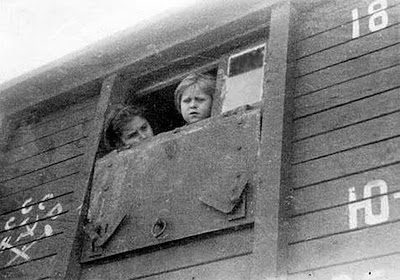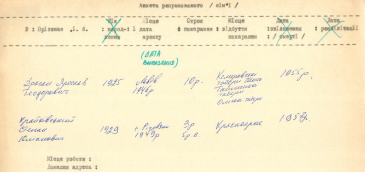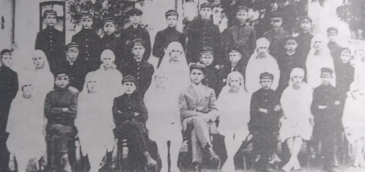Oleksii Havryliuk: How should one approach the reading and interpreting of deportation documents? Is there a specific responsibility for those who engage with and analyze these documents?
Simonas Jazavita: Because of the aforementioned reasons, anyone who reads documents from that era must proceed with caution. All information should be critically evaluated and properly contextualized. Such painful and difficult topics should be handled by experienced researchers. I believe universities should offer specialized courses to teach students about traumatic history and how to work with it.
Oleksii Havryliuk: That’s a valid suggestion, indeed. However, even when these documents are properly contextualized and read, there are still some dangers, as I see it. In the digital age, how can we ensure that the testimonies of deportation victims are not reduced to mere “content,” and how can we avoid trivializing the magnitude of these catastrophes on the internet and social media platforms?
Simonas Jazavita: The trivialization of catastrophes is a huge challenge in today’s world. Social networks function like an ocean of information, causing people to become desensitized to the horror and traumatic experiences of others, as if these events are just random acts of cruelty happening “far away”. It’s like the natural armor of consciousness; the brain tries to protect itself from an overload of negative emotions. However, such a pessimistic view is only one side of the coin. Social networks also offer the opportunity to immediately reach people who live hundreds or thousands of kilometers away. They enable immediate help, whether by spreading information or sending financial aid. Many examples of this come from Russia’s recent aggression against Ukraine. Here in Lithuania, these events are very well known through social networks. You can act instantly, and of course, sometimes you act, sometimes you can’t because it’s an ocean of information, as I mentioned. Despite this amount of information, donation drives remain very popular. Even though it’s not the first or the fifth or tenth time you see someone in the need of help, there are thousands of donation campaigns every day. So the digital age has its pros and cons, but overall, it’s a net positive. When the Soviets occupied Lithuania, Latvia, and Estonia in June 1940, newspapers were common around the world, but they were more focused on the Wehrmacht invading Paris, the cultural capital of Europe. The Iron Curtain then descended, and only scant information about what was happening in the Soviet-occupied countries was available. Deportations in Lithuania, Latvia, Estonia, Ukraine, and Moldova occurred, but the “free world” almost never heard about them. Nowadays, it’s much more difficult to completely suppress information, so Russia attempts to trivialize it, and bring up absurd conspiracy theories. But there is hope because fewer and fewer people are falling for these lies and propaganda.

Oleksii Havryliuk: Given the ongoing war against Ukraine and Russia’s forcible deportation of Ukrainians, do you believe it is appropriate to establish commemorative days for these modern deportations of Ukrainians, similar to those observed in the Baltic States? For example, eyewitness accounts indicate that the most significant deportations occurred in Mariupol in late March and early April, and in Kherson and Kharkiv in September–October 2022. Or is it too soon to establish commemoration days at this stage of the ongoing war?
Simonas Jazavita: I think it’s important to establish commemoration dates as soon as possible. Of course, when events are very recent, many people do not perceive them as history. In order to make any commemoration effective, we need to build momentum, especially in the initial years, by spreading awareness of the event within the country. In this context, it is essential to collect as much information as possible and disseminate it to the general public through mainstream media and the internet. Of course, it is also essential to promote awareness of such commemorations internationally. People who lived outside the Iron Curtain often have limited knowledge of the brutal Soviet reality, and may think that current reports of Russian atrocities in Ukraine are somewhat exaggerated. So countries with similar histories, like Lithuania, can help a lot with such initiatives because it is one of our main missions in the historical memory battlefield as well. A lot of countries between the Baltic, Black, and Adriatic seas share similar sentiments and can support each other in this regard. For example, “The Day of Remembrance for Victims of Stalinism and Nazism” is now officially commemorated in the Europe Union and other countries, thanks to the direct cooperation and initiative of Central Eastern Europe countries, starting with the Prague Declaration in 2009. So, we have good examples of how to commemorate such tragic and sad events.





